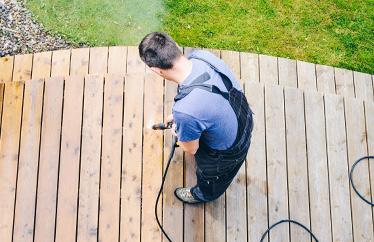The wide-open spaces of the Great Plains are what most people think about when it comes to tornadoes (think The Wizard of Oz, Twister and Into the Storm). Between January and March, it’s the southeast region that sits closely adjacent to the famed Tornado Alley – known as Dixie Alley – where homeowners need to be watchful. During these months, tornadoes in North Carolina, South Carolina, Georgia, Missouri, Mississippi, Alabama, Arkansas, Louisiana, Kentucky, Tennessee, and Texas tend to take on higher speeds and last longer than those in its neighboring states.
Dixie Alley tornadoes are known to be lethal and damaging for reasons unique to the region (more forested terrain, more densely populated areas, greater occurrence of tornadoes during the night, and more mobile homes present in the region). As of 2019, damages from tornadoes in Dixie Alley totaled upwards of $600 million over the preceding 20-year span (compared with $470 in Tornado Alley).
The National Oceanic and Atmospheric Administration report indicates that the average lead time for predicting a tornado is 13 minutes. Most preparations for your home and property can and should be done far ahead of tornado season., In the midst of tornado season, your only concern should be for your own personal welfare and the safety of your family.
Prepare
Know your risk. If you’ve lived in a tornado-prone region for any length of time, you are likely already aware of the risk and potential damage the storms can cause. Understand the orientation of your home. Is your home at the bottom of a hill or incline, thus at higher risk for flooding? Is your home near a densely forested area, thus in the immediate path of uprooted trees? Depending on the exact location of your home, you may need supplemental flood insurance or other additional coverage - especially in places prone to extreme weather like Kansas City, MO. If you’re unsure if you may need additional coverage, the Federal Emergency Management Agency (FEMA) offers a Flood Map Service Center, and search for your specific address.
Know what you have. Take a detailed inventory of your home and belongings far in advance of any storms. Cross-reference the collective and individual values of these items against your home insurance policy to identify any gaps in coverage.
Make sure you’re covered. Most homeowners insurance policies cover damage from tornadoes and hurricanes and other structures on your property like tool sheds and carports. However, if you own many valuable artworks or electronics, for example, check that your supplemental policies cover the replacement costs of these items, versus reimbursement only for the “actual cash value,” which covers the depreciated value only.
Pro Tip: When a tornado or storm warning has been issued, charge and back up your electronic devices and make sure they’re in a safe place (i.e. not sitting on the floor, where flood water can reach them). Many of our vital documents are stored electronically today, it’s equally as important to keep your electronic devices in working condition and on hand. Also, be sure to choose an insurance provider that offers enough protection for such belongings as laptops and cell phones (say, four times the amount of coverage as other companies).
Have a contingency plan. Damage from tornadoes can be so extensive that homes may be uninhabitable while repairs and rebuilding are underway. A home insurance policy with coverage for additional living expenses can help cover temporary housing (a hotel for a short time or an apartment or rental home for longer repairs), clothing, pet boarding, even baby supplies. Look at the guidelines of your policy to help plan for potential temporary living arrangements should your home be damaged.
Maintain your home’s structural integrity. Unlike hurricanes, which can fully uplift a roof from a house regardless of the age or condition of that roof, tornadoes – and the heavy hail storms and extreme winds that accompany them – can often collapse roofs inward or shatter them to pieces due to sheer force. In the southeast, where many houses are older and historical, it’s imperative to maintain your roofs and outer facades of your home in order to mitigate this risk. Initial home inspections can help determine your timeline of needed repairs and maintenance, while annual and seasonal checks help keep you ahead of the storm.
Prepare for an emergency. Plan to protect the people in your home, should you need to hunker down during a storm. An emergency kit stocked with food, water, flashlights, batteries, cash and a battery-powered radio to keep you connected with the latest storm developments, should be at the ready.
Pro tip: In the case of tornadoes, basements or the lowest floor of your home, are considered the safest places to take shelter if you can or must stay in your home. Avoid windows and cover your body with some sort of cushion or sturdy barrier.
In all cases, diligently planning ahead for storms can help alleviate stress when a storm does hit. If you have questions about your home or state, Hippo experts are always on hand to help you prepare before the storm, and assign you a personal concierge who will personally guide you through the claims process if the need arises.




